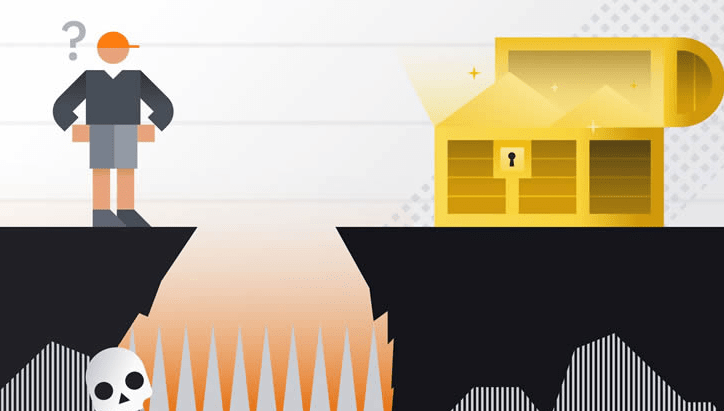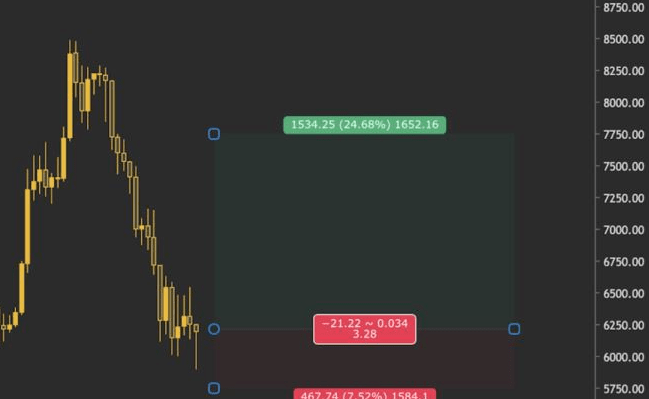Whether you choose day trading or swing trading, you should understand some basic concepts about risk. These can give you a preliminary understanding of the market and provide a foundation to guide your trading activities and investment decisions. Otherwise, you will not be able to protect the funds in your trading account and grow them.
We have discussed risk management, position sizing, and setting stop-losses. However, if you adopt an aggressive trading strategy, you need to understand some critical points. How much risk is associated with the potential return? What are your potential gains versus potential losses? In other words, what is your risk-reward ratio?
In this article, we will discuss how to calculate the risk-reward ratio of a trade.

What is the risk-reward ratio?
Risk-reward ratio (represented as R/R ratio or R) can calculate the corresponding risk a trader takes to achieve a certain potential return. In other words, it reflects the potential return you gain for every dollar you invest.
The calculation itself is quite simple: divide the maximum risk by the net target profit. How should you do this specifically? First, look at the price point where you want to start trading. Then, decide where to take profit (if the trade is successful) and where to set a stop-loss (if the trade incurs a loss). This is crucial if you want to manage risk appropriately. Excellent traders will set profit targets and stop-losses before starting a trade.
Now that you have identified your entry and exit target points, you can calculate the risk-reward ratio. Divide the potential risk by the potential return. The lower this ratio, the greater the potential return for each 'unit' of risk you invest. Let's understand how it works in practice.
How to calculate the risk-reward ratio
Suppose you want to establish a long position on a Bitcoin platform. After analysis, you determine to take profit at a price point that is 15% higher than your entry price. At the same time, you will raise the following question: At what price level will your trading idea fail? In other words, where do you intend to set the stop-loss order? In this case, you decide to set the failure point at 5% lower than the entry price.
It is important to note that this percentage is usually not randomly chosen. You should determine when to take profit or stop loss based on your analysis of the market. Technical analysis indicators can help you do this.
Now, our profit target is 15%, and the control point for potential loss is 5%. What is the risk-reward ratio? Calculation shows: 5/15=1:3=0.33. It’s that simple. This means that for each unit of risk investment, we could potentially earn three times the return. In other words, the risk we take for each dollar could also be magnified threefold. Therefore, if we hold a position worth $100, we could potentially make a profit of $15 at the cost of losing $5.
We can move the stop-loss closer to the entry price, thereby reducing this ratio. However, as we mentioned, the entry and exit points should not be calculated based on arbitrary numbers but should be based on rational analysis. If the trade combination has a very high risk-reward ratio, it may not be worth trying your luck with numbers. It’s better to continue looking for other setups with good risk-reward ratios.

Example of a trading combination with a risk-reward ratio of 3.28.
Analysis of risk and reward
Suppose we made a bet at the zoo. If you sneak into the birdhouse and feed a parrot by hand, I will give you 1 Bitcoin. What is the potential risk of doing this? The risk is that you are doing something you shouldn't be doing, and you might be taken away by the police. But if you succeed, you will receive 1 Bitcoin.
At the same time, I propose an alternative. If you sneak into the tiger cage and feed the tiger raw meat with your bare hands, I will give you 1.1 Bitcoins. What is the potential risk of doing this? You could certainly still be taken away by the police. But there’s also a possibility of being attacked by the tiger and suffering fatal injuries. On the other hand, the reward is slightly better than the bet of feeding a parrot. Because if you succeed, you will get more Bitcoins.
Which one seems more cost-effective? Strictly speaking, neither is very cost-effective, because you shouldn't sneak into the zoo. Nevertheless, with the bet on feeding the tiger, the risk you take is greater, but the potential reward is only slightly higher.
Similarly, many traders will look for trading combinations where the returns outweigh the potential losses. This is known as asymmetric opportunity (where potential gains exceed potential losses).
It is also worth mentioning your win rate. Your win rate is the number of profitable trades divided by the number of losing trades. For example, if your win rate is 60%, it means that 60% of your trades will be profitable (this is the average ratio). Let’s see how to apply this ratio in your risk management.
Even so, some traders can achieve high profits with a very low win rate. Why is this? Because the risk-reward ratio of their individual trading combinations matches it. If they only choose combinations with a risk-reward ratio of 1:10, they may incur losses on 9 consecutive trades but still break even with the remaining trade. In this case, they only need to win two out of ten trades to profit. This is the power of calculating risk versus reward.
We have introduced what the risk-reward ratio is and how traders can incorporate it into their trading plans. To understand the risk profile of any capital management strategy, it is essential to calculate the risk-reward ratio.
When it comes to risk, you should also consider keeping a trading log. By recording the status of your trades, you can gain a more accurate understanding of how your strategy performs. Additionally, you can flexibly apply it to different market environments and asset classes.
This is the detailed content on getting started for beginners in the crypto circle: What is the risk-reward ratio? How to calculate the risk-reward ratio? For more information about risk-reward ratios, please follow Kuige.

